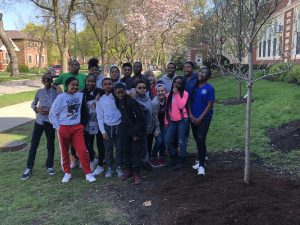Environmental Service Project

To view the photo-rich magazine version, click here.
Originally appears in the Summer 2019 issue.
IN THE MODERN SCIENCE classroom, inquiry-based instruction (or science inquiry) has become a fundamental approach in effective teaching with considerable evidence suggesting its positive effects on cognitive attainment, conceptual understanding, critical thinking skills, and even general feelings towards science.1 This approach, taken in environmental education, can spark interest in nature among students and foster stronger environmental stewardship, leading to long-term commitments to conservation.2 Promoting awareness and action through inquiry-based hands-on lessons has taught my middle school students lessons reaching far beyond any textbook — lessons that create environmental awareness and strong knowledge of real-life environmental issues and problems.
At Sutherland Elementary School — located on the far south side of Chicago, Illinois — my seventh- and eighth-graders participate in an environmental conservation unit that allows them to not only connect with nature, but also gain the necessary skills needed to problem-solve. My students gain the ability to solve real-world problems that are leading to major environmental issues, such as a lack of biodiversity and climate change. They understand these issues through a number of avenues, such as watching documentaries, conducting field research reports on endangered species, and tending to our school gardens. These types of experiences are essential for our youth as they learn to make informed decisions and then take responsible actions to impact environmental awareness.
This content is restricted to subscribers only.
If you are not yet a subscriber, please consider taking out a subscription here.
If you are an existing subscriber, kindly log in or contact us at info@greenteacher.com for more information.










